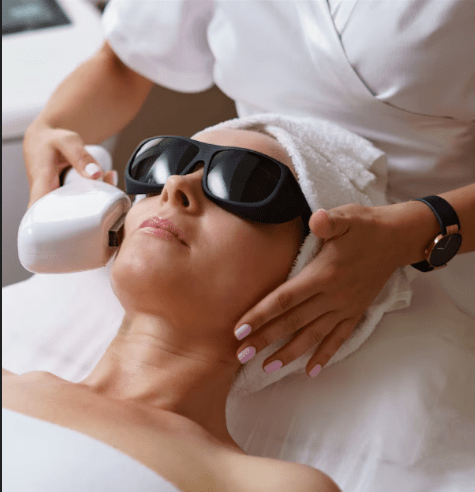Traveling abroad for ptosis correction surgery requires careful planning—not just for the procedure itself but also for your post-operative recovery and return journey. Understanding the typical recovery timeline and how to prepare for travel after surgery is essential for a safe, comfortable, and complication-free return trip.
This guide provides a comprehensive overview of ptosis correction recovery stages and offers practical advice to help you plan your return trip abroad confidently and safely.
⏳ Typical Recovery Timeline After Ptosis Surgery
1. Immediate Post-Surgery (Days 0–3)
- Expect swelling, bruising, mild discomfort, and some eyelid tightness.
- The eyes may feel dry or gritty due to temporary changes in blinking.
- You may wear a protective eye patch or shield.
- Medications typically include antibiotics and lubricating eye drops or ointments.
Travel Implications:
During this phase, you should avoid travel entirely to reduce the risk of complications and allow your body to begin healing.
2. Early Recovery (Days 4–10)
- Swelling and bruising start to reduce but may still be visible.
- Vision may be blurry or watery.
- Stitches (if non-dissolvable) are usually removed around day 5–7.
- Light activities can often be resumed, but avoid strenuous movements, bending, or heavy lifting.
Travel Implications:
Avoid flying during this phase if possible. Air travel can increase swelling and dryness due to cabin pressure and low humidity, and prolonged sitting increases the risk of blood clots. If you must travel, take precautions (see below).
3. Intermediate Recovery (Weeks 2–4)
- Most visible swelling and bruising have resolved.
- Eyelid position stabilizes, but subtle changes may continue.
- You can usually return to work and normal daily activities but still avoid heavy exercise or rubbing the eyes.
Travel Implications:
Flying during this phase is generally safer, but you should still follow post-operative care instructions closely.
4. Full Recovery (1–3 Months)
- Eyelid appearance is near-final.
- Any residual numbness or tightness fades.
- You can resume all activities, including exercise and makeup use.
✈️ Planning Your Return Trip: Key Considerations
1. When Is It Safe to Fly After Ptosis Surgery?
- Most surgeons recommend waiting at least 7 to 10 days before flying, preferably closer to two weeks.
- This allows initial healing, reduces swelling, and decreases the risk of complications such as dry eyes or blood clots.
- Always get medical clearance from your surgeon before booking your return flight.
2. Tips for Flying After Ptosis Surgery
If you must fly during the early recovery phase, follow these precautions:
- Stay hydrated: Drink plenty of water before and during the flight to prevent dry eyes and dehydration.
- Use prescribed eye drops: Lubricate your eyes regularly to combat dryness from cabin air.
- Wear protective sunglasses: This helps shield sensitive eyes from bright lights and dust.
- Move frequently: Walk the aisle every 1–2 hours to reduce the risk of deep vein thrombosis (DVT).
- Elevate your head: Use a neck pillow to keep your head slightly elevated and reduce swelling.
- Avoid rubbing your eyes: Touching your eyes during travel increases infection risk.
3. Arrange Post-Flight Care
- Have a trusted person meet you at the airport to help with transportation.
- Plan to rest for at least 48 hours after arrival.
- Continue your post-op care routine diligently.
- Schedule a local follow-up appointment with an ophthalmologist or your surgeon (if available remotely).
4. Pack Smart for Your Return Trip
- Bring all prescribed medications, eye drops, ointments, and any post-op supplies.
- Carry written post-op instructions and your surgeon’s contact information.
- Pack sunglasses, cold compress packs, and a travel pillow.
- Keep your medical travel insurance documents handy.
5. Know When to Delay Travel
- If you experience unusual symptoms like increased pain, vision changes, severe swelling, redness, or discharge, postpone travel and seek immediate medical attention.
- Don’t rush your return to avoid complications or the need for revision surgery.
📅 Sample Recovery and Travel Timeline
| Time After Surgery | Recovery Milestones | Travel Recommendations |
|---|---|---|
| 0–3 days | Maximum swelling, discomfort | No travel, rest near clinic |
| 4–7 days | Stitches removal, reduced bruising | Avoid flights; stay close to surgeon |
| 7–10 days | Improved comfort, eyelid stabilizing | Possible flight if medically cleared |
| 2–4 weeks | Return to most activities | Safe to fly with precautions |
| 1–3 months | Full healing | Resume all travel and activities |
🧠 Final Thoughts
Successful ptosis surgery is not only about choosing the right surgeon but also about managing your recovery and travel safely. International patients should prioritize healing time, follow medical advice closely, and plan their return journey thoughtfully to protect their vision and appearance.
Would you like a detailed post-op travel checklist or guidance on booking medical travel insurance for ptosis surgery recovery?




